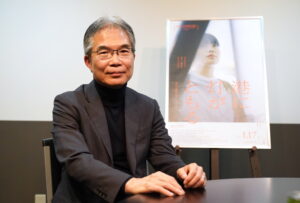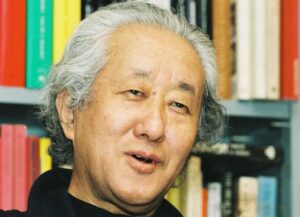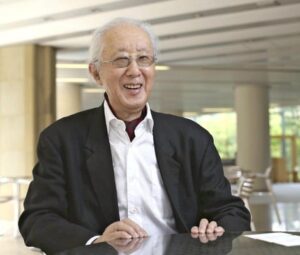Introduction: Humanity’s Eternal Desire
The aspiration for “immortality” has been cherished by humanity since ancient times. Just as Emperor Qin Shi Huang sought the elixir of immortality, many people today continue to search for ways to maintain youth and health. In 2025, science and technology have indeed made remarkable progress, achieving revolutionary results in cancer treatment and aging research. However, without being misled by sensational headlines, let us explore the truth behind these latest research developments from a realistic and scientific perspective.
Chapter 1: The Reality and Possibilities of Photoimmunotherapy
What is Photoimmunotherapy?
Photoimmunotherapy is a new treatment method that has gained attention as the fifth cancer treatment approach. It involves administering a drug that combines antibodies specifically binding to cancer cells with photosensitive dyes, then applying laser light to the cancer to induce cell death.
The innovation of this treatment lies in its ability to selectively attack only cancer cells. It is noted as a new treatment method that places minimal burden on patients’ bodies while precisely targeting cancer. While conventional chemotherapy and radiation therapy affect normal cells as well, photoimmunotherapy can destroy only target cells.
Treatment Results and Current Status in 2025
As of May 2025, head and neck Akalux treatment (photoimmunotherapy) is available at approximately 180 otolaryngology and head and neck surgery facilities across all 47 prefectures in Japan. Since the start of clinical use about four years ago, approximately 800 treatments have been performed domestically.
Currently, it is covered by insurance for head and neck treatments specifically, but the scope of application is limited. Expressions like “defeating the final boss of cancer” are overly optimistic; in reality, it is positioned as one treatment option for specific cancer types.
Technological Progress and Limitations
In March 2025, strategic methods for photoimmunotherapy to overcome various diseases including cancer were established, using photoimmune antibodies to target specific sites. This research demonstrated the ability to prevent novel coronavirus cell infection and eliminate multidrug-resistant Staphylococcus aureus, suggesting expanded application possibilities.
However, photoimmunotherapy also has challenges. It is difficult to apply to deep cancers where light cannot easily reach, and it is not effective against all cancer types. Additionally, treatment effectiveness varies among individuals, and complete cancer eradication cannot always be guaranteed.

Chapter 2: The Frontlines of Aging Research – Expectations for Senolytics
What are Senescent Cells?
Aging is an inevitable reality for many people, but recent research is gradually elucidating the mechanisms of aging. Senescent cells have unique characteristics, expressing excessive amounts of an enzyme called SA-β-galactosidase, with cell cycle arrest occurring.
These senescent cells adversely affect healthy cells as well, so their removal is expected to improve age-related diseases.
Senolytics – The Potential of Senescent Cell Removal Drugs
Senolytics is a general term for therapeutic drugs or compounds that selectively kill only senescent cells. The purpose is to “cut off the source of inflammation and promote tissue regeneration and functional recovery.”
Research shows that removing senescent cells extends lifespan by 20-30% and improves exercise capacity, skin regeneration, and heart and kidney function. However, these results are mainly from animal experiments, and many challenges remain for human application.
Research Trends in 2025
In January 2025, new molecular mechanisms controlling cellular aging and rejuvenation were discovered, bringing new insights to the aging research field. This research has advanced detailed understanding of senescent cell enlargement mechanisms, potentially leading to the development of more effective treatments.
Various senolytics including quercetin, dasatinib, and fisetin have been developed so far, with expected applications to age-related diseases such as Alzheimer’s disease, diabetes, and arteriosclerosis.
Chapter 3: Is a “150-Year Lifespan” Really Possible?
Realistic Possibilities for Lifespan Extension
The expression “150-year lifespan” is very impactful, but it needs to be verified based on scientific evidence. Current research shows promising results regarding healthy lifespan extension and prevention of age-related diseases, but whether human natural lifespan can be dramatically extended remains unclear.
Aging is a complex biological process that cannot be solved by a single treatment method. Many factors including genetic factors, environmental factors, and lifestyle interact to cause aging progression.
The Realistic Goal of Healthspan Improvement
A more realistic approach is extending “healthspan.” Maintaining a high quality of life for extended periods without being troubled by disease is becoming increasingly feasible through advances in science and technology.
The combination of early cancer detection and treatment through photoimmunotherapy, prevention and improvement of age-related diseases through senolytics, and other technologies may enable healthier and more active aging periods than previously possible.
Chapter 4: Technical Challenges and Ethical Considerations
Technical Limitations and Challenges
Many technical challenges remain in current research. For photoimmunotherapy, challenges include limitations in light penetration range, improving drug selectivity, and minimizing side effects.
Regarding senolytics, accumulated senescent cells cannot be easily removed. While removing accumulated senescent cells may lead to suppression of lifestyle diseases and age-related conditions that conventional treatments could not adequately control, long-term safety and effective administration methods are still in the research stage.
Ethical and Social Issues
Even if significant lifespan extension becomes possible, we need to consider its impact on society. Various social challenges may arise, including changes in labor force structure, effects on social security systems, widening intergenerational gaps, and resource allocation problems.
Additionally, there is a risk of creating a disparity society where only the wealthy enjoy longevity due to expensive treatment costs. Alongside scientific and technological progress, building fair and sustainable social systems is also an important challenge.

Chapter 5: Realistic Approaches to Healthy Longevity Available Today
Lifestyle Improvements
While waiting for the latest research results, there are things we can do now. Improving basic lifestyle habits such as balanced diet, moderate exercise, adequate sleep, and stress management certainly contributes to healthspan extension.
Utilizing Preventive Medicine
It is important to actively utilize currently available preventive medicine, including regular health checkups, cancer screenings, and early detection and treatment of lifestyle diseases. Latest treatments like photoimmunotherapy also demonstrate maximum effectiveness within the framework of early detection and early treatment.
Correct Understanding of Scientific Information
It is important to understand accurate information based on scientific evidence without being misled by sensational headlines or overly optimistic advertising, and to maintain realistic expectations.
Chapter 6: Research Progress and Future Prospects
International Research Trends
Longevity research is being actively conducted not only in Japan but also in countries worldwide. Research is accelerating through international cooperation including the NIH (National Institutes of Health) in the United States, various European research institutions, and Chinese research institutions.
Throughout 2023, numerous presentations were made at international conferences based on research results from non-clinical studies, clinical trials, and real-world data regarding Akalux treatment (photoimmunotherapy), advancing knowledge accumulation and international sharing.
Development into Personalized Medicine
In the future, personalized medicine based on individual genetic backgrounds, living environments, and health conditions is expected to become mainstream. Photoimmunotherapy and senolytics may also be provided as treatment methods optimized for each individual.
Utilization of AI and Big Data
With the development of artificial intelligence and machine learning technologies, research to discover new treatment and prevention methods from vast medical data is also progressing. These technologies have the potential to further accelerate longevity research.
Chapter 7: Is “Living with Only the Brain in a Mechanical Body” Realistic?
Current Status of Cyborg Technology
The expression “living with only the brain in a mechanical body” is a familiar theme in science fiction, but realistically it remains a distant future possibility. Current medical technology is advancing in the development of prosthetics and artificial organs, but technology to replace the entire body except the brain with machinery does not exist.
Progress in Neuroscience Research
Research on brain function elucidation and brain-computer interfaces (BCI) is certainly progressing, but complete understanding of the brain still requires much time. Additionally, maintaining brain function requires complex physiological systems including blood circulation, nutrient supply, and waste removal, which are difficult to completely reproduce artificially with current technology.
Conclusion: Realistic Hope and Continuous Effort
The development of photoimmunotherapy and progress in senolytics research are certainly expanding medical possibilities. However, the idealistic goal of an “ageless body and eternal life” is still far from scientific reality.
What is important is not being misled by excessive expectations or exaggerated advertising, but utilizing currently available scientific knowledge to live healthy and fulfilling lives. While benefiting from the latest medical technologies, continuing steady efforts such as improving basic lifestyle habits, regular health management, and correct understanding of scientific information represents the best path toward realistic healthy longevity.
Scientific and technological progress continues, and new breakthroughs may be found in the next 10 to 20 years. However, to maximize these benefits, it is essential to maintain current health, acquire correct knowledge, and preserve calm and realistic judgment.
The human dream of “immortality” may be difficult to fully realize, but it is steadily approaching reality in the form of healthspan extension and quality of life improvement. Toward this hopeful future, it is important to support scientists’ research and start with what each of us can do.
This hope-filled future requires supporting scientific research and beginning with what each individual can contribute. The dream of human immortality, while perhaps impossible to fully realize, is steadily approaching reality through health span extension and improved quality of life.












コメント